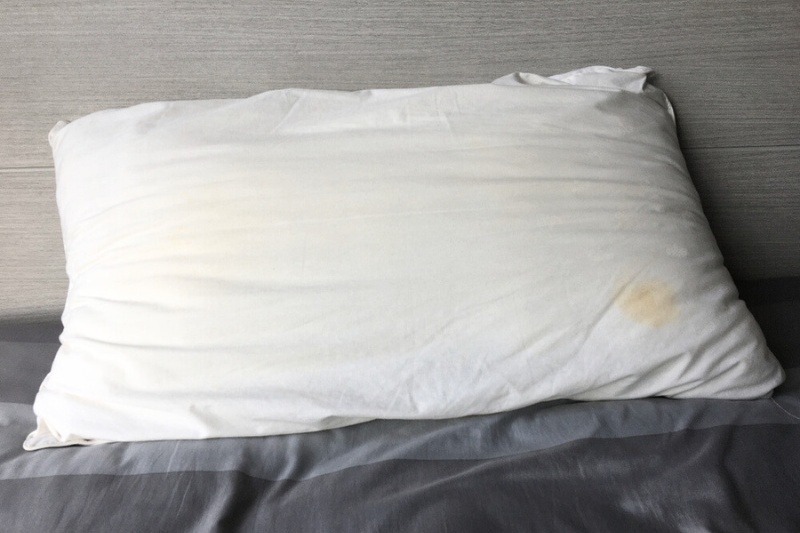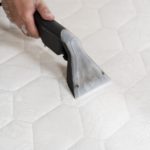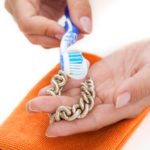Pillows are essential for achieving a good night’s sleep. However, they accumulate stains, spills, and odours over time that can compromise their hygiene and appearance.
Cleaning your pillows regularly is thus crucial to keep them clean and fresh.
Although some pillows can be machine washed, others cannot. If they are filled with feathers or made of memory foam, it’s essential they don’t get wet.
Luckily, spot cleaning is a practical and effective way to maintain the cleanliness of these pillows. By learning how to spot-clean a pillow, you can avoid ruining them by washing them while keeping them hygienic.
Spot cleaning is also practical even for pillows that can be machine washed. Perhaps you have a small stain that needs to be removed, but you don’t have time for a full wash-and-dry process.
So, whatever your reason for spot-cleaning pillow, here we walk you through the essential steps.
How Do You Spot Clean a Dirty Pillow?
Various methods can be used to spot-clean a pillow, including several natural stain removers that can be used to get spots out of your pillow cover. Our top three choices are:
- Washing up liquid
- Lemon juice
- White vinegar
Method 1: Washing up liquid

If the pillow stain has been caused by grease, washing up liquid can be a great tool to spot clean a pesky stain.
Start by very carefully squirting a bit of washing-up liquid onto the stain, ensuring to try and stay as close to the stain as possible so as not to affect the rest of the pillow.
Blot at the stain using a damp cloth to work the washing-up liquid into the affected area. Do not scrub the stain, as this could damage the pillow.
You may need to leave the soap on the stain for a few hours before rinsing it off using as little water as possible.
Method 2: Lemon juice
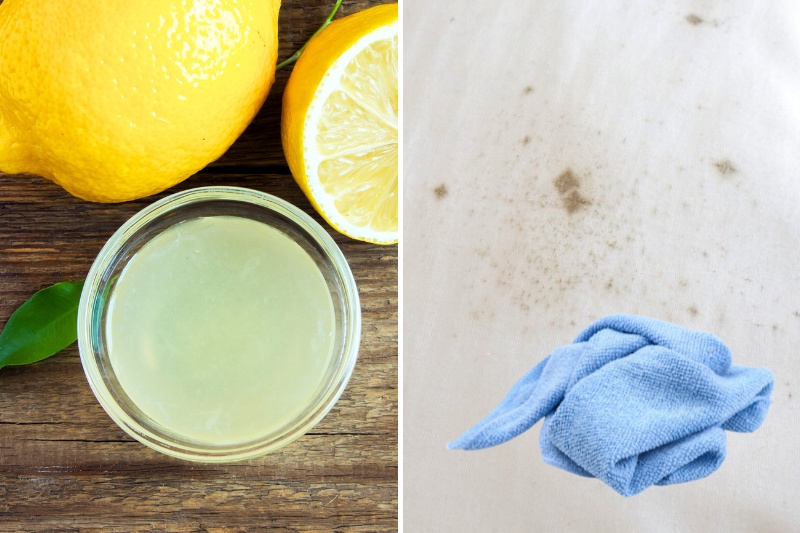
One natural method that can be used to spot clean pillows is using a solution made up of lemon juice and water.
The acid in lemon juice acts as a natural bleaching agent and is particularly good at removing grease stains and bodily fluids from pillows.
There are two ways that lemon juice can be used to spot clean pillows:
- Start by mixing one part lemon juice with two parts warm water. Dip a cloth in the solution and gently blot the stain until it is removed.
- Carefully squeeze a lemon directly onto the stain and then pour salt on top. Blot the mixture of juice and salt, repeating this process until the stain is no longer visible.
Regardless of which method you use, finish by rinsing the stain with water. Always ensure you angle the pillow downwards to avoid the inside of the pillow getting wet.
Method 3: White vinegar and bicarbonate of soda
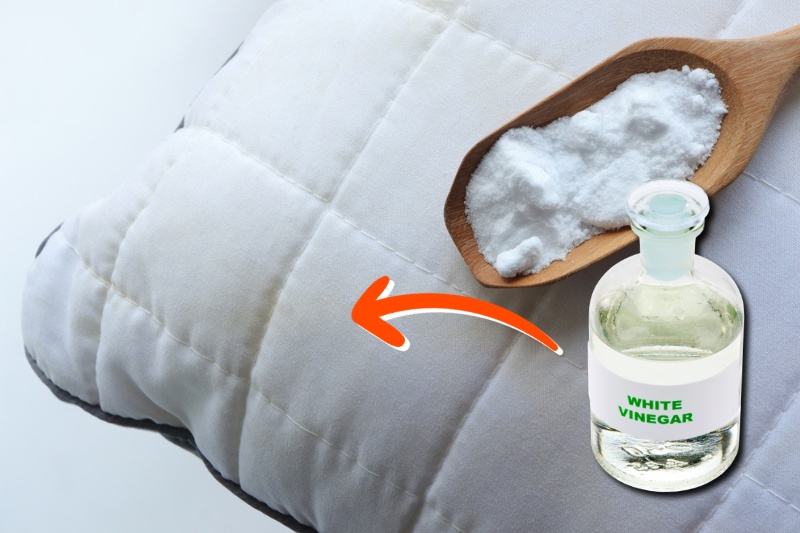
Another acid that can be used on tough stains is vinegar. Vinegar’s natural acidity helps to break down ingrained dirt while still being kind to skin and fabric.
It’s also safe to use around children and pets. Plus, as it is only mildly acidic, it will not cause the material to bleach.
If you want to spot-clean a pillow with vinegar, we recommend using it in combination with bicarbonate of soda (baking soda) and following these steps:
- Carefully saturate the stained area in white vinegar, trying not to go outside the stain.
- Next, make a cleaning paste using 50:50 vinegar and bicarbonate of soda.
- Gently apply the paste to the stained area until the stain is lifted.
- Once lifted, rinse all the paste off using a damp, white cloth, taking care to get as little of the surrounding area wet.

Should I Use Cold or Warm Water to Spot Clean My Pillows?
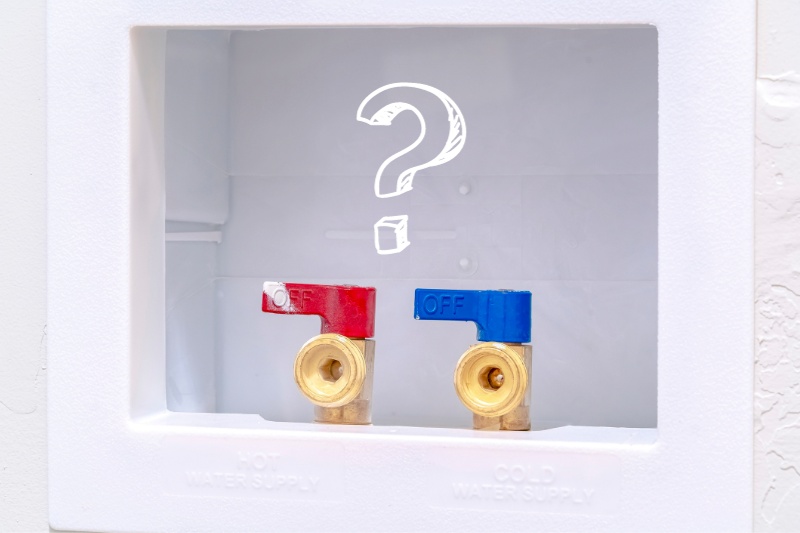
The appropriate water temperature for stain removal hinges on the stain’s composition. Some stains may respond better to cold water, whilst hot water may cause certain stains to set.
- Cold water is more effective for organic stains like blood, specific foods, beverages, and water-based paint. Many stains on cushions are of organic composition—sweat, saliva, blood, and other bodily fluids make their way onto our pillows as we sleep.
- Hot water is better suited for oily stains, such as makeup. If you’re dealing with grease stains, hot water might be a better option. Hot water is also better at removing stains from synthetic fabrics, from which many pillows are made.
Hot water can set organic stains and make them impossible to remove, whereas cold water won’t impair the stain removal process of greasy stains—it just won’t be effective.
Therefore, a general rule is to start with cold water, shifting to warm only if cold water proves ineffective.
Other Tips for Spot Cleaning Pillows

To achieve the best results when spot-cleaning your pillow, keep these tips in mind:
- Act quickly: The longer you leave a stain to sit, the harder it is to remove. Address stains promptly to prevent them from setting into the fabric.
- Use gentle products: Choose mild detergents or stain removers suitable for the material of the pillow to avoid damage.
- Test in a hidden area: Before applying any cleaning solution, test it in an inconspicuous area of the pillow to ensure it won’t cause discolouration or damage.
- Avoid scrubbing: Rather than scrubbing at the stain, gently blot or dab the mark to lift it without spreading or damaging the fabric.
- Dry thoroughly: Ensure the spot-cleaned area is completely dry before using the pillow to prevent mildew or odours.
Why Spot Clean Your Pillows?
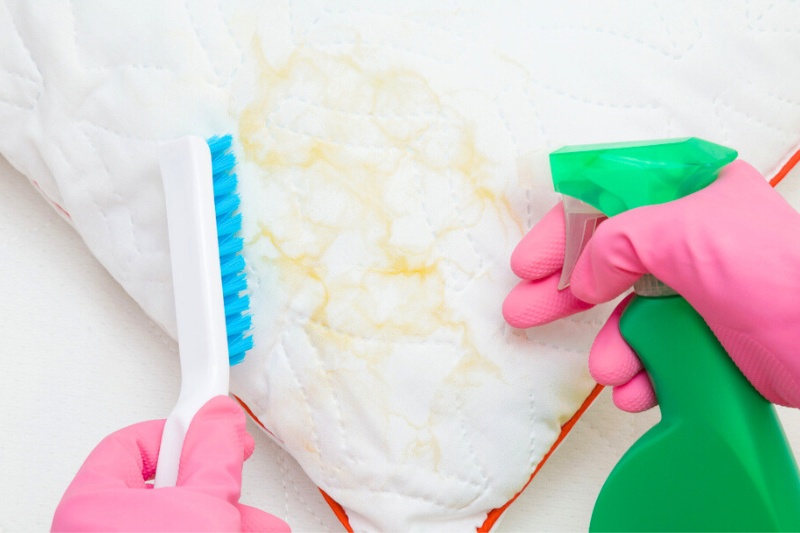
Spot cleaning is a targeted cleaning method that focuses on treating specific stains and spots on your pillows without washing the entire cushion.
There are several reasons why spot cleaning is a preferred option over putting a pillow in the washing machine:
- Preserve pillow quality: Washing pillows too frequently can break down the fibres and reduce the lifespan of your pillow. Spot cleaning allows you to maintain the pillow by addressing stains promptly without impacting quality.
- Save time and energy: Spot cleaning is a quicker and easier process compared to washing and drying an entire pillow. It’s a convenient and time-effective way to deal with isolated stains and spills.
- Environmentally friendly: By spot cleaning, you’re using fewer resources like water and energy compared to a full pillow wash. It’s a more eco-friendly choice and a perfect solution for the environmentally-conscious owner.
- Safe for all pillows: Depending on their material, pillows are often not suitable to be washed in a washing machine—you must always check the care label before washing it to ensure the pillow is not damaged. In comparison, spot-cleaning is generally safe for all pillows.
Using Upholstery Cleaners To Clean Pillows
If you don’t want to use cleaning agents and water, an alternative is to use upholstery cleaners.
Often referred to as furniture vacuums, these tools are invaluable for tackling pillow stains.
They’re also great for general cleaning of pillows and cushions, especially pillows that can’t be machine washed.
There are two main upholstery cleaners: dry vacuuming (i.e. regular vacuums) and wet vacuuming (i.e. steam cleaners).
Both have slightly different functions as they work in different ways, so the kind that is most suitable for washing your pillow will depend on the stain you are trying to clean and the fabric of the pillow in question.
Dry vacuuming pillows
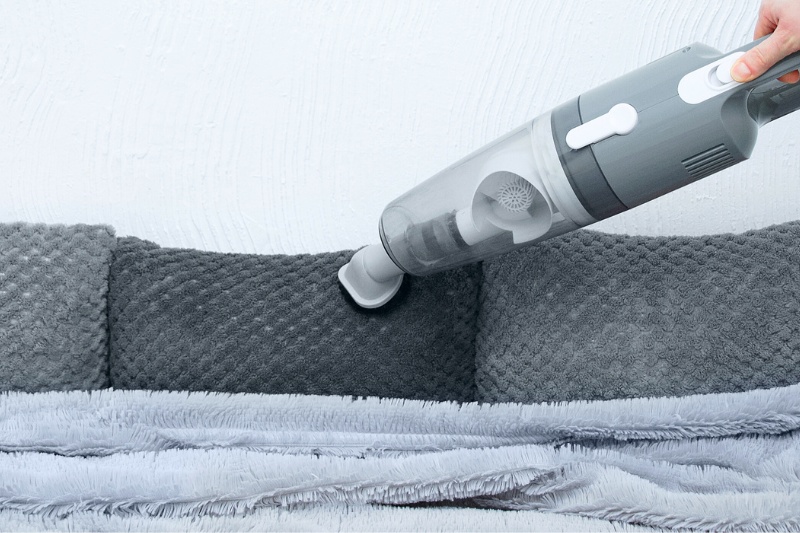
To eliminate dust or dry dirt, consider dry vacuuming your pillow without using any water. This method can effectively lift brown or yellow marks caused by dirt that hasn’t necessarily stained the fabric.
Additionally, dry vacuuming aids in removing dust mites from the surface of your pillow.
We recommend getting into the habit of dry vacuuming your pillows regularly—it helps minimise the accumulation of dirt deep within the fibres, preventing them from developing a discoloured, dingy appearance caused by trapped dirt and dead skin.
By reducing the presence of dirt and skin particles within the fibres, you will maintain the overall cleanliness and fresh look of your pillows.
Wet vacuuming or steam cleaning pillows
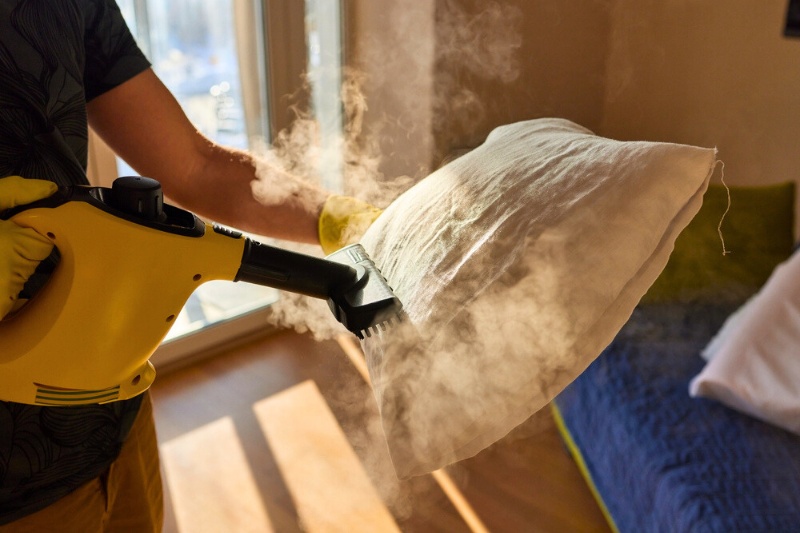
Certain upholstery vacuums are equipped with a sprayer capable of emitting hot water or steam. This allows for scrubbing the stains with hot water and upholstery shampoo, which is then promptly sucked back up into the vacuum. This technique is ideal for pillows with filling in that should not get wet.
Steam cleaning is also suitable for cleaning pillows for individuals with allergies. Begin the process by loading your steam cleaner with distilled water and gently moving the steamer in a back-and-forth motion, maintaining a distance of around six inches.
Always remove excess moisture and fluff your pillows after steam cleaning to guarantee a thorough drying process.
How Do I Prevent Stains on My Pillows?

The most effective approach to maintaining the cleanliness of your pillows is to proactively prevent stains in the first place. Consider these helpful pointers:
- Opt for pillow covers that can be easily removed. Managing stains on a removable pillowcase is far simpler than tackling a complete pillow.
- Swiftly address spills by spot-cleaning them as soon as they occur. The longer a spill lingers, the more challenging it becomes to eliminate.
- Regularly vacuum your pillows. This practice helps eradicate accumulated dirt or dust from the surface before it embeds itself into the pillow fibres.
- Change pillowcases once a week, where possible, to limit the amount of sweat and natural body oils that seep into pillows.
- Wash your face at night to remove makeup or oil and prevent them from staining pillows as you sleep. This is also better for your skin and helps keep the pillows clean and hygienic.
As many pillows have such frequent usage, stains will inevitably happen. However, even if you can’t wash your pillows, spot cleaning can effectively remove these stains.
With a bit of patience and delicacy, your stained pillow can be spot-cleaned to look as good as new.

Hannah has a passion for cleaning. She worked her way around Australia by cleaning hostels in exchange for free accommodation and used her cleaning skills to bag a job as a chalet host for a luxury ski company in France.
